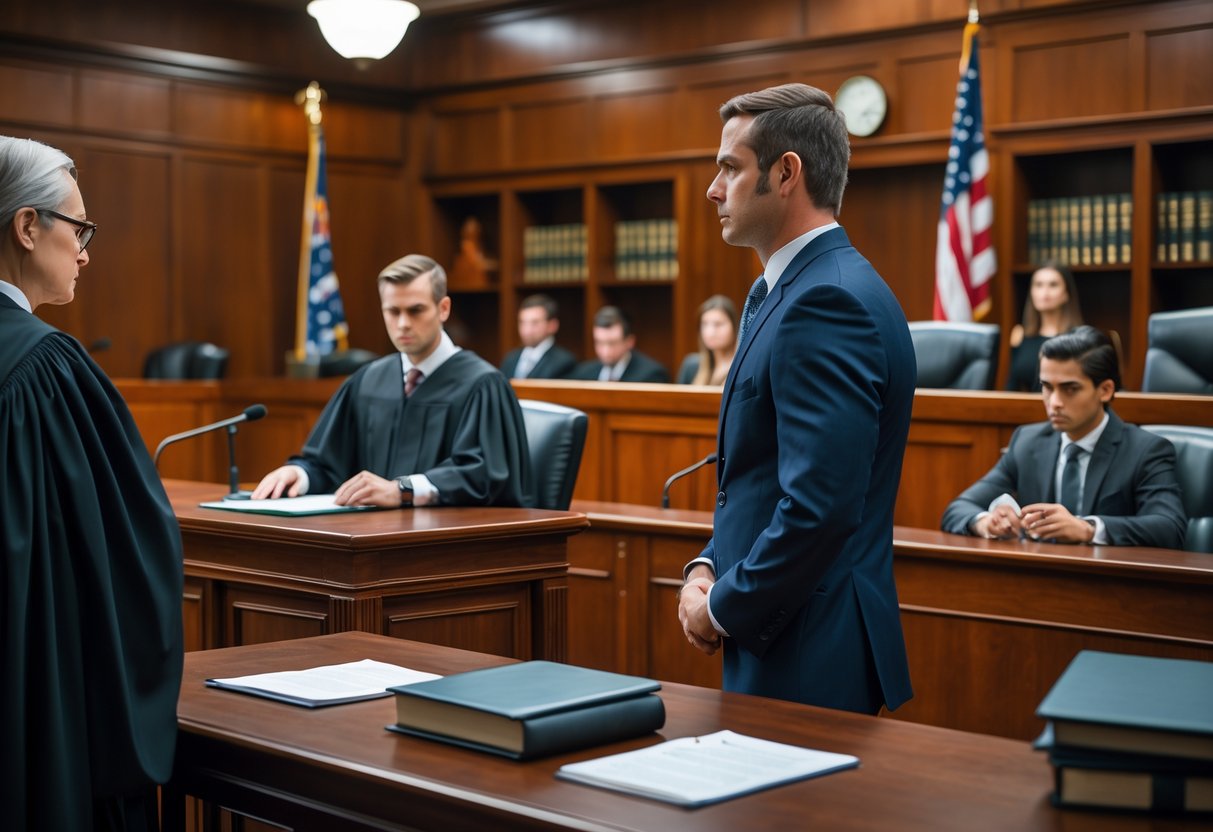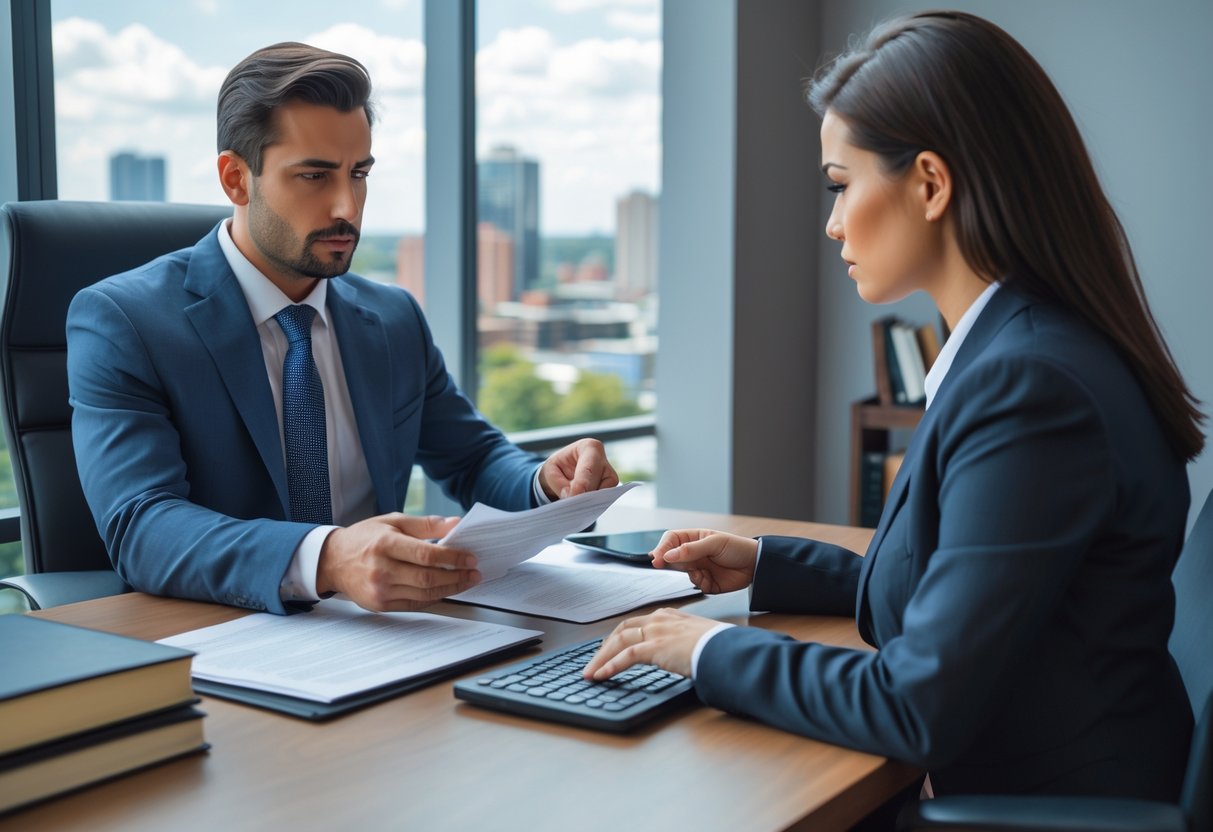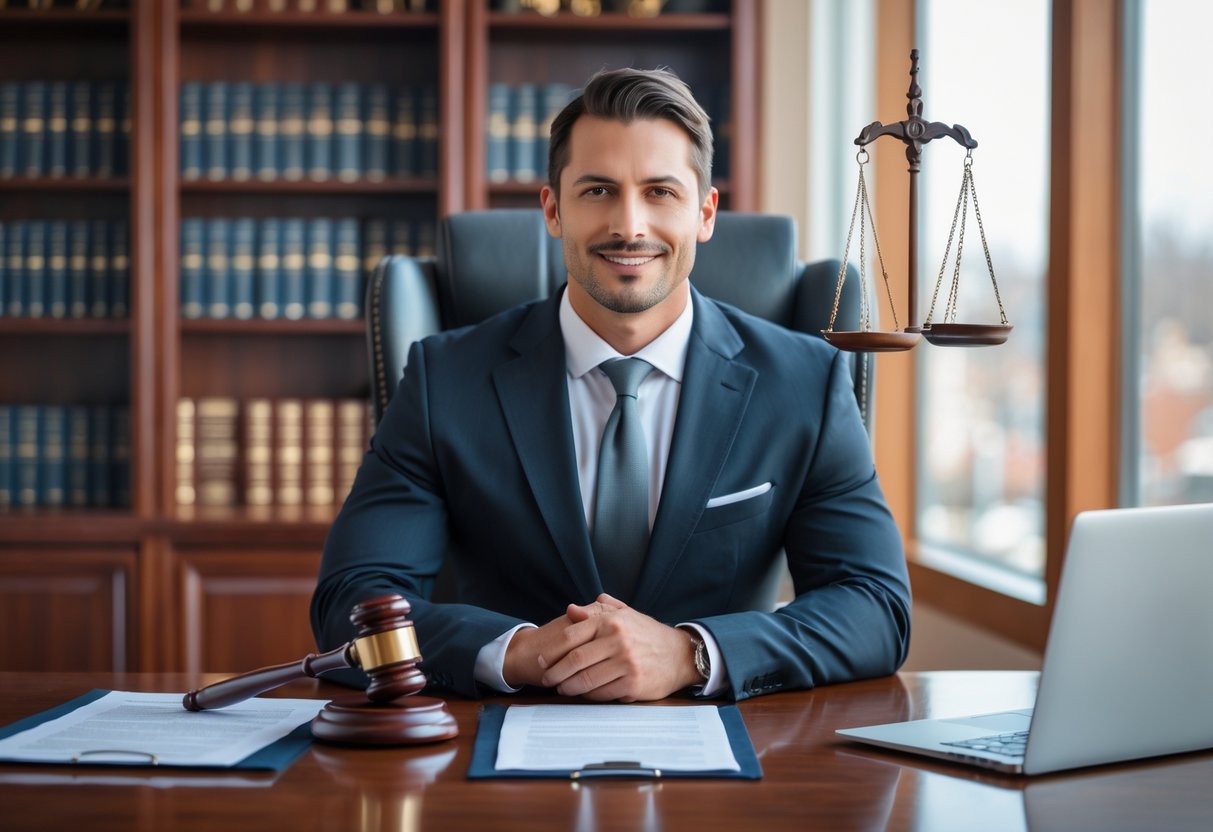Understanding the trial procedures in criminal defense helps us see how the justice system works to protect people’s rights. We need to know each step in the criminal trial process, from choosing a jury to presenting evidence and arguments, because these details shape the outcome.

The criminal justice system can seem complicated, but learning about the key stages makes it easier to follow what happens in the courtroom. Knowing what to expect in trial procedures can also help us make informed decisions if we ever find ourselves involved in a case.
By exploring the parts of a criminal trial, we gain insight into how fairness and justice are maintained in our legal system. This knowledge is important for anyone interested in the rights and responsibilities within the criminal justice system.
Key Steps in the Criminal Trial Process
Criminal trials involve several steps that help protect the rights of the accused and ensure a fair process. Each step has its own procedures, legal requirements, and possible outcomes.
Investigation and Arrest
The trial process often starts with an investigation by police or special law enforcement agencies. Officers gather evidence, interview witnesses, and collect facts about a possible crime. If they find enough evidence, they may make an arrest.
After an arrest, the person accused is taken into custody. Police must read the Miranda rights, which include the right to remain silent and the right to an attorney.
During the investigation and arrest stage, it is important that constitutional rights such as protection against unreasonable searches and seizures are respected. We may request a lawyer at any point, and the authorities must stop questioning if we ask for legal representation.
Charging and Initial Appearance
After arrest, prosecutors decide whether to bring formal charges. This is called “charging.” The decision depends on the evidence collected during the investigation.
If charges are filed, the accused will have an initial appearance before a judge, usually within 48 hours. At this hearing, the charges are read, and we are informed of our rights, including the right to a defense attorney.
The judge will also address bail. We may be released before trial, or the judge may decide that we must stay in custody. The initial appearance guarantees that we understand the charges and our rights going forward.
Arraignment and Plea
At the arraignment, we hear the precise criminal charges against us in court. The judge will make sure we understand the charges. At this stage, we choose a plea: guilty, not guilty, or no contest.
If we plead “not guilty,” the case moves toward a trial. If we plead “guilty” or “no contest,” the judge may decide the sentence right away or set a later date for it.
We have the right to an attorney at this stage. The arraignment helps us understand the legal process and prepares us for the next steps in our defense.
Pre-Trial Procedures in Criminal Defense

Pre-trial procedures set the stage for everything that happens in a criminal case. These steps help us understand the charges, the rights of the accused, and what actions both sides can take before going to trial.
Bail and Pre-Trial Motions
Bail decides if someone accused of a crime can stay out of jail until their trial. Judges look at factors like the seriousness of the crime, past criminal history, and whether the person might run away. Sometimes bail is set at a certain amount, while in other cases, the person is released on their own promise to return.
Pre-trial motions are requests made to the court before the trial happens. We might ask to dismiss the charges, challenge certain evidence, or change the location of the trial. A common pre-trial motion is the motion to suppress evidence. If we believe evidence was gathered in violation of rights, we argue to keep it out of the trial.
These early steps are important. The court’s decisions can shape how the rest of the case unfolds.
Common Pre-Trial Motions:
- Motion to dismiss charges
- Motion to suppress evidence
- Motion for change of venue
Preliminary Hearings and Grand Jury
A preliminary hearing is a key step where the judge decides if enough evidence exists for the case to go forward. The prosecution presents basic proof, and defense lawyers can challenge the evidence. It is not the same as a full trial; it is mainly about showing probable cause.
In some cases, especially serious felonies, a grand jury is used instead. The grand jury listens to the evidence from the prosecutor and then votes in private. If most jurors agree there is enough reason, they issue an indictment, and the case moves forward.
Both methods protect us from weak charges moving forward. They make sure there’s at least some proof before a person faces a full trial.
Plea Bargaining and Negotiations
Plea bargaining can happen at many points before trial. The defense and the prosecutor talk to reach an agreement that might avoid a full trial. In a plea deal, the accused might agree to plead guilty to a lesser charge. In return, the prosecutor drops more serious charges or suggests a lighter sentence.
These negotiations depend on the details of the case, the strength of the evidence, and what both sides want. Plea bargains are common because they save time and offer certainty. Sometimes, part of the agreement may be to dismiss certain charges.
We work closely with our clients to make sure they know all the options, risks, and benefits before accepting any plea deal. This step can lead to a faster and sometimes better outcome than a trial.
Jury Selection and Impartiality
Jury selection in criminal trials is an important step that helps ensure fairness in the courtroom. We use several methods to identify an impartial jury and address possible jury bias before a trial begins.
Voir Dire Process
The voir dire process is where we, along with the judge and lawyers, ask potential jurors questions. The goal is to find out if someone may not be able to be fair, or if they already have opinions about the case. We ask about background, beliefs, and possible connections to the people involved.
Questions during voir dire can cover things like news coverage, criminal records, or even relationships with law enforcement. We listen carefully to the answers so we can spot any bias or prejudice that might affect the trial.
If a juror says something that makes us think they can’t be impartial, we can raise a concern. The court then decides if that person should be removed from the jury pool. This process helps us create a group that will listen to evidence fairly.
Peremptory Challenges and Challenges for Cause
We have two tools to remove potential jurors: peremptory challenges and challenges for cause.
A challenge for cause is used when we believe a juror clearly cannot be fair or impartial. Some reasons include strong opinions about the case or personal connections. If we show a valid reason, the judge will excuse that juror.
Peremptory challenges let us dismiss a juror without giving a reason, but we can’t use them for discriminatory reasons, such as race or gender. The number of peremptory challenges is limited and set by law. The table below shows the difference:
| Challenge Type | Must Give a Reason? | Limits | Used For |
|---|---|---|---|
| Challenge for Cause | Yes | No | Clear signs of bias or conflict |
| Peremptory Challenge | No | Yes | Any reason except discrimination |
Both types help us shape a more impartial jury.
Addressing Jury Bias
Jury bias is when someone’s feelings or beliefs make it hard for them to judge facts fairly. We look for signs of bias during voir dire and through questionnaires.
Some common types of bias include:
- Pretrial publicity: A juror has seen or read news about the case.
- Personal experiences: Past events could affect their judgment.
- Relationships: Knowing a witness, lawyer, or the accused can cause bias.
If we think a juror might be biased, we explain our concerns to the court. Judges may question the juror further, and if bias seems likely, the juror can be removed. These steps help us aim for a fair trial by an impartial jury.
Courtroom Procedures During Trial
In a trial, two of the most important stages are how each party starts their case and how evidence is shown to the court. We need to understand what happens during each step to follow the process clearly.
Opening Statements
The trial begins with opening statements from both sides. These are short speeches by the prosecution and the defense. We use this time to outline what we believe the evidence will show. No evidence is presented yet.
Our opening statement explains our side of the story. We might describe facts, introduce people involved, or highlight issues in the case. The language must be clear and not include arguments but rather a roadmap of what we plan to prove.
The prosecution speaks first, followed by us, the defense. Sometimes, we may wait until later to give our opening, but most often, we go right after the prosecution. Both parties should avoid emotional appeals and focus strictly on facts.
Presentation of Evidence
After opening statements, the trial moves to presenting evidence. This is when we call witnesses, show documents, or use physical objects to support our position. The prosecution presents their evidence first. When they finish, we can present ours.
Key points during evidence presentation:
- We question witnesses in direct and cross-examinations.
- Only evidence allowed by the judge; admissible evidence can be shown.
- The rules of evidence make sure everything shown is fair, reliable, and relevant.
Objections may be raised if we believe some evidence or questions should not be allowed. The judge decides what evidence is admissible. All evidence must follow the law, or it might not be considered by the jury or judge.
Examination and Testimony
Understanding how witness testimony is given and challenged helps us see the structure of a trial. In this part of the process, different rules guide us as we ask questions and make objections.
Direct Examination
During direct examination, we call our own witnesses to the stand. The witness testifies about facts they know that support our case. We use open-ended questions, which let witnesses explain in their own words.
For example, we might ask, “What did you see on the night of the incident?” instead of leading them with a yes or no answer. Direct examination is our chance to present evidence clearly and logically. The questions must not suggest the answer.
We avoid leading questions so the testimony remains honest and reliable. This part sets the stage for what evidence the jury or judge will consider first.
Cross-Examination of Witnesses
Cross-examination happens after direct examination. Here, we question the other side’s witnesses. Our goal is to test the accuracy, honesty, and memory of their testimony.
We can use leading questions in cross-examination, such as, “Isn’t it true that you were not at the scene?” This lets us focus the witness on specific points and highlight any weaknesses or contradictions.
Effective cross-examination sometimes reveals inconsistencies and challenges the credibility of witness testimonies. We do this to help the jury or judge decide how much trust to place in what was said.
Objections and Legal Standards
Objections are a way for us to stop improper questions or evidence from reaching the jury. We might object if a question is leading during direct examination, or if it asks for hearsay (when a witness repeats something they were told by someone else).
| Objection Type | Reason Used |
|---|---|
| Leading | Question suggests an answer (not allowed on direct) |
| Hearsay | Witness repeats another person’s words or statement |
| Relevance | Information does not relate to the case |
| Speculation | Witness guesses instead of stating facts |
The judge will decide if the objection is valid based on legal standards. If the judge agrees, the question or answer is removed from consideration. This keeps the trial focused on fair and lawful testimony.
Defense and Prosecution Strategies
Both the defense and prosecution use different strategies during a criminal trial. Each side has specific goals, rules, and responsibilities they must follow to present their cases.
Defense Case-in-Chief
The defense presents its side after the prosecution finishes. We may call witnesses, show evidence, and challenge the prosecution’s case. Our main goal is to create reasonable doubt for the jury. If doubt exists, the jury must not find the defendant guilty.
Common Defense Strategies:
- Presenting an alibi
- Challenging the facts or reliability of evidence
- Cross-examining prosecution witnesses
- Questioning the credibility of police or expert witnesses
Defense attorneys often use expert testimony to counter scientific evidence like DNA results. Sometimes, we ask the court to exclude evidence that was obtained illegally. We are not required to prove innocence, only to show gaps or problems in the prosecution’s case.
Prosecution Proof and Burden
In criminal cases, the prosecution holds the burden of proof. This means they must prove the defendant’s guilt “beyond a reasonable doubt.” We expect the prosecution to use evidence such as physical objects, documents, eyewitnesses, and expert opinions.
Key Elements in Prosecution Strategy:
- Establishing motive, means, and opportunity
- Creating a clear sequence of events
- Linking the defendant to the crime with strong evidence
The prosecution may call police officers, forensic experts, or eyewitnesses to testify. We often see the prosecution try to anticipate and address any defenses the defense team is likely to raise. The strength of their case depends on how convincing their proof is to the jury.
Jury Instructions and Deliberation
In criminal trials, the judge guides us on the law, then the jury must meet privately to decide the verdict based on what they learned during the trial. Each step has rules to protect fairness and to help us understand what is required.
Jury Instructions from the Court
After both sides finish their closing arguments, the judge explains jury instructions to us. These are important rules about the law, what we need to prove guilt or innocence, and how we should look at evidence.
The judge tells us what the charges mean, what facts we must agree on, and how to use the evidence. Sometimes, the judge will give special instructions for things like self-defense or “beyond a reasonable doubt.” We must listen carefully and follow these instructions exactly.
Common points covered in instructions include:
- How to judge witness credibility
- The presumption that the accused is innocent
- That we can only use evidence shown in court
We are not allowed to make decisions based on personal feelings, news, or outside sources. The instructions are meant to keep our decision fair and based only on the law.
Jury Deliberation Process
Once the instructions are given, we move to a private room. This is called deliberation. We choose a foreperson to help guide our discussion and keep things organized.
During deliberation, we talk through the evidence and try to agree on what really happened. Everyone’s opinion is heard, and we may review parts of the evidence or ask the judge questions. Notes, if allowed, can help remind us of what was said.
We must try to reach a unanimous verdict everyone must agree, either “guilty” or “not guilty.” If we cannot all agree after long discussion, this is called a “hung jury,” and the judge decides what happens next.
Jury deliberation is private, and we cannot talk to others about the case until our job is done. Our goal is to make a careful, honest decision using only the instructions and evidence presented.
Verdicts and Outcomes
At the end of a criminal trial, the judge or jury decides if the accused is guilty or not guilty. The outcome is based on the evidence and the law.
Types of Verdicts
There are two main types of verdicts: guilty and not guilty. A guilty verdict means the court has found enough evidence to convict the accused of the charges. A not guilty verdict, also called an acquittal, means the evidence was not strong enough for a conviction.
Sometimes a court may issue a verdict of not guilty by reason of insanity. In rare cases, the jury cannot agree, resulting in a hung jury. If this happens, the judge may declare a mistrial, and the case could be retried.
| Verdict Type | Meaning |
|---|---|
| Guilty | Conviction and possible sentence |
| Not Guilty (Acquittal) | Defendant is released, no conviction |
| Not Guilty by Insanity | Defendant may be committed, not traditional jail |
| Hung Jury/Mistrial | No verdict; possible retrial |
Wrongful convictions sometimes occur if there was a mistake or missing evidence.
Standards for Conviction or Acquittal
To convict someone, the jury or judge must believe the accused is guilty beyond a reasonable doubt. This is the highest standard in law. If the prosecution cannot meet this standard, we must find the accused not guilty.
Acquittals do not mean the person is innocent. It only means there was not enough proof for conviction. When there is insufficient evidence, the law tells us to acquit.
If the accused has a criminal history, it should not decide the verdict. Only legal evidence from the case can be used. This protects the fairness of the trial. Appeals may happen if we think the verdict was incorrect or a mistake occurred.
Sentencing and Post-Trial Procedures
Once a verdict is reached, courts decide what penalty should be given. Defendants can also ask for changes or a new trial after sentencing.
Sentencing Phase and Hearing
After a guilty verdict, we move into the sentencing phase. The judge reviews information about the defendant, such as their criminal history and the details of the crime. Both the defense and prosecution can present arguments or evidence.
Victims may have a chance to speak at the sentencing hearing. The judge considers state sentencing laws and any recommended sentencing ranges. We may see the use of pre-sentence investigation reports, which include facts about the defendant’s background.
Sentencing can take place immediately or at a separate hearing. The length and type of punishment depend on the crime and relevant laws. For serious crimes, mandatory sentences might limit the judge’s options.
Punishment and Imprisonment
Punishment can include imprisonment, probation, fines, community service, or other penalties. The type and length of punishment depend mainly on the crime’s severity and the defendant’s record.
Imprisonment is common in felonies. Jails usually hold those sentenced for shorter periods (less than a year), while prisons are for longer terms. Some defendants may get alternatives to jail, like probation or home confinement.
We often see punishments based on sentencing guidelines or minimums set by law. Repeat offenders may get harsher sentences. Conditions of release, like treatment programs or restrictions, may be included.
| Punishment Type | Description |
|---|---|
| Imprisonment | Jail or prison time |
| Probation | Supervised release with rules to follow |
| Fines | Payment of money to the court or victims |
| Community service | Work performed to help the community |
Appeals and Post-Trial Motions
After sentencing, the defense may file post-trial motions. Common motions include a request for a new trial or to set aside the verdict due to legal errors. We need to file these motions in a limited time after sentencing.
Appeals let us challenge the outcome or procedures of the trial. An appeals court will review if the law was applied correctly, not whether the defendant is guilty or innocent. New evidence is generally not allowed during an appeal.
The appeals process can be slow, sometimes taking many months or even years. If the court finds mistakes that affected the verdict or sentence, it may order a new trial or change the sentence. Some convictions are final if appeals are denied or deadlines pass.
Ensuring Fairness and Legal Rights
Our legal system sets strict rules and protections to make sure everyone gets a fair trial. We must understand how these protections work, how evidence is handled, and what rights defendants have when facing serious accusations.
Due Process Protections
Due process is the foundation of fairness in criminal defense. It means the government must respect our rights at every step of the trial.
Key due process protections include:
- Notice of the charges against us
- Access to legal counsel
- The chance to hear and question witnesses
- The right to a public trial
If any of these steps are skipped, the trial can be considered unfair. The judge is responsible for making sure all due process rules are followed. Any evidence or actions that break these rules may be thrown out or lead to a mistrial.
Admissibility of Physical and Forensic Evidence
Not all evidence can be used in court. We rely on strict rules to decide if evidence is admissible. Physical evidence (like weapons or stolen items) and forensic evidence (like fingerprints or DNA) must be collected and handled carefully.
Evidence must be:
- Collected legally with proper warrants
- Stored to prevent tampering or contamination
- Tested and analyzed by qualified experts
If the police gather evidence without following legal steps, the judge may rule that it cannot be used. This protects us from unfair practices and helps ensure only reliable, relevant evidence is considered at trial.
Self-Incrimination and Legal Protections
The Fifth Amendment protects us from self-incrimination. This means we do not have to testify against ourselves or answer questions that could make us look guilty.
We have the right to remain silent during police questioning and in court. Police must tell us about this right through Miranda warnings. If we are forced to speak or were not given these warnings, any statements we make might not be allowed as evidence.
Our lawyers help us use this right and advise us about when it is safe or smart to answer questions. This protection is a key part of making sure trials are fair for everyone.
Alternative Trial Formats in Criminal Cases
In criminal cases, not every case will go to a traditional jury trial. Some are heard and decided by a judge, while others may end early through plea deals between the defense and prosecution.
Jury Trials and Bench Trials
We often think of criminal trials being decided by a jury. In a jury trial, a group of citizens listens to the evidence and decides if the accused is guilty or not guilty.
Bench trials are different. In these trials, there is no jury. Instead, the judge alone decides the verdict. Defendants may choose a bench trial if they believe the judge will be fairer or if the case is complex.
| Jury Trial | Bench Trial | |
|---|---|---|
| Decision-maker | Jury of citizens | Judge only |
| Speed | Usually slower | Often quicker |
| Complexity | Good for straightforward | Good for complex |
Bench trials are less public but might offer a faster outcome. Both formats protect the rights of the accused and allow for legal arguments and rules of evidence.
Guilty Pleas and Plea Agreements
Many criminal cases end with a guilty plea or a plea agreement instead of a full trial. In a guilty plea, the defendant admits guilt in court, often in exchange for a lighter sentence.
A plea agreement is a deal between the defense and prosecution. The defendant may plead guilty to a lesser charge, or the prosecution might recommend a lower sentence.
Key points about plea agreements:
- They save time and court resources.
- The accused gives up the right to a trial.
- The judge must agree to the deal before it is final.
We must carefully consider any plea offer, as it has lasting effects on the defendant’s record and future. Plea agreements are very common and can be an important part of criminal defense strategy.




